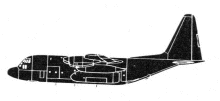Incident Overview

Description
An ATR-42-320F cargo plane sustained substantial damage in a runway excursion accident at Madang Airport (MAG), Papua New Guinea. The airplane, P2-PXY, operated on a domestic cargo flight from Port Moresby to Madan, Tabubil and then back to Port Moresby. During taxi at Port Moresby, the anti-skid warning light illuminated. The flight crew stopped the aircraft, carried out the relevant checklist, and determined from the aircraft performance charts that it was permissible to land at Madang with the anti-skid inoperative. The flight to Madang was normal and the aircraft landed there at 07:32. While on the ground, the freight from Port Moresby was off-loaded and a cargo consisting entirely of cigarettes, packaged in large cardboard cartons, was loaded for Tabubil and Port Moresby. The aircraft taxied to depart from runway 25 at 09:15. The flight crew used the full length of the runway and the takeoff roll was normal until the Pilot-in-Command, who was the handling pilot, tried to rotate at VR (which the flight crew had calculated to be 102 knots). The controls felt very heavy in pitch and he could not pull the control column back in the normal manner. After approximately two seconds the Pilot-in-Command aborted the takeoff and selected full reverse thrust, and he later applied full braking. It was not possible to stop the aircraft before the end of the runway and it continued over the embankment at the end of the runway and the right wing struck the perimeter fence. This caused the aircraft to yaw to the right and it entered a creek beyond the perimeter fence at approximately 45 degrees to its direction of movement. The aircraft came to rest in a small creek, with the forward 4/5 of the fuselage in the water and the cockpit mostly submerged. The right outboard wing section caught fire and the flight crew escaped through the hatch in the cockpit roof. The Pilot-in-Command, who was the last to remain on board, discharged the fire extinguishers in each engine and switched off the battery master switch before leaving the aircraft. The investigation found that the aircraft total load exceeded the maximum permissible load and the load limit in the forward cargo zone A exceeded the zone A structural limit. The mass and the centre of gravity of the aircraft were not within the prescribed limits. The weight for cargo compartment A as calculated by the pilots for the weight and balance of the aircraft should have been 350 kg. However, this was exceeded by 786 kg. The maximum (permissible) all up weight was 16,900 kg. The Load Chart listed the MAUW accepted by the PIC as 16,606 kg. However, the actual total cargo weight was 597 kg heavier than listed on the load sheet, therefore, the aircraft was 343 kg heavier than the permissible MAUW. Contributing factor: The investigation found that Air Niuginis lack of robust loading procedures and supervision for the ATR 42/72 aircraft, and the inaccurate weights provided by the consignor/client company likely contributed to the overload. Other factors: a) The Madang Airport fire-fighting tender vehicle did not have sufficient capacity to fight a more extensive aircraft fire involving an aircraft larger than the ATR 42. b) The Madang Airport did not meet the ICAO Annex 14 Standard with respect to the required aerodrome category 6, for rescue and fire-fighting services. c) The Madang Airport did not meet the ICAO Annex 14 Standard with respect to the runway end safety areas. d) The Madang Airport did not meet the ICAO Annex 14 Standards with respect to the required Airport Emergency Plan.
Primary Cause
Insufficient Load and Weight Management, Inadequate Aircraft Inspection, and Lack of Robust Loading Procedures and Supervision.Insufficient Load and Weight Management, Inadequate Aircraft Inspection, and Lack of Robust Loading Procedures and Supervision.Share on:



